Story at a glance:
- The US is short on affordable housing by nearly seven million homes.
- Adaptive reuse could fill this gap as thousands of buildings around the country go unused.
- Adaptive reuse housing can provide affordable options to communities in need.
US cities need more housing—especially affordable housing. The US has a shortage of 6.8 million rental homes that are affordable and available to extremely low-income renters, according to the National Low Income Housing Coalition.
The demand for affordable housing is outpacing supply nationwide, with new multi-family units renting at prices cost-prohibitive for middle- and low-income renters, according to a previous gb&d article from Think Wood. Nearly two-thirds of renters across the US say they can’t afford to buy a home, and saving for a down payment is out of reach when home prices are rising at twice the rate of wage growth.
How can we solve this housing shortage problem? One solution could be adaptive reuse.
What is Adaptive Reuse?
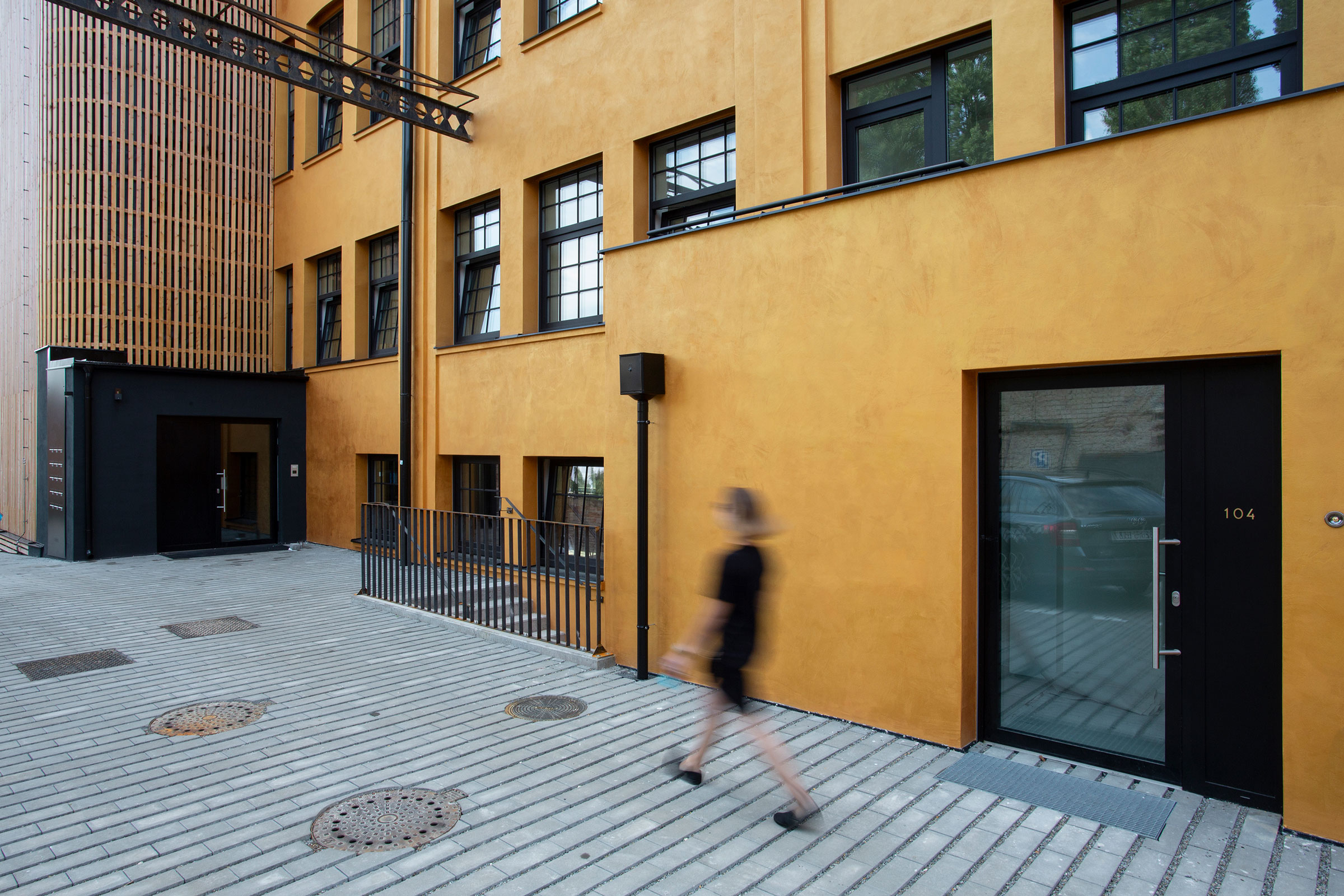
The DADA Distrikt mixed-use residential complex was originally built to serve as an industrial storage facility. Photo by Qualibau
Across the US a wide variety of structures are classified as underused, abandoned, or functionally obsolete. The US government alone owned about 45,000 of them in 2014, according to The Economist. Rather than demolish these buildings to make way for new development, adaptive reuse asks us to repurpose that which already exists.
Adaptive reuse is a more sustainable solution than building new and makes use of what we already have. The EPA estimated 600 million tons of construction and demolition debris were generated in the US in 2018. Repurposing buildings and converting them can help alleviate some of the waste typically produced by the construction industry.
“The most sustainable building is one that doesn’t get torn down, and old buildings embody the culture and history of a specific place,” Aric Lasher, former principal architect and director of design at HBRA Architects, previously told gb&d.
What Qualifies as Affordable Housing?
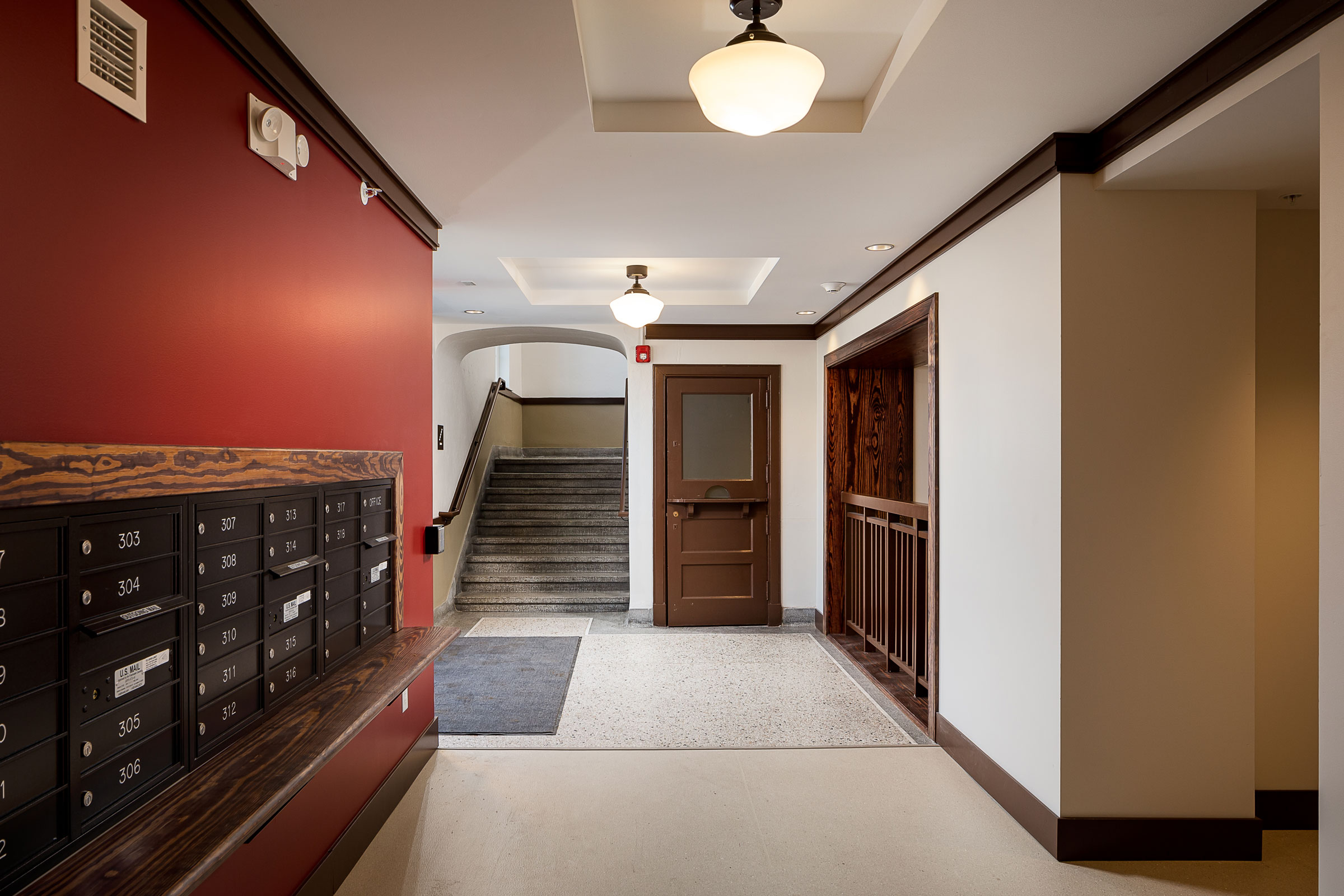
Originally a school, Tiger Senior Apartments now provides affordable housing to low-income seniors in Paris, IL. All units are designated as affordable housing either at 60% or 30% of AMI. Photo by J.L. Jordan Photography
What actually qualifies as affordable housing? The US Department of Housing and Urban Development (HUD) defines affordable housing as any dwelling wherein the occupant is paying no more than 30% of their gross income for rent and other housing costs, including utilities. This 30% cutoff is intended to ensure that households are capable of keeping a roof over their heads while still having money left over for food, transportation, healthcare, and other necessities or non-discretionary costs.
One of the most important metrics in affordable housing is area median income (AMI), or the midpoint of a specific locale’s income distribution. A household is typically considered low-income if it earns less than 80% of the AMI, very low-income if it makes between 30 and 60% AMI, and extremely low-income if it earns less than 30% AMI. Most affordable housing is marketed towards those making less than 60% of their AMI.
A variety of low-income housing programs are in place at both the national and state level that provide aid to public housing agencies, which in turn manage the properties at affordable rates. Most low-income housing is subsidized in this manner, though naturally occurring affordable housing also exists.
6 Examples of Affordable Housing Through Adaptive Reuse
Here are five examples of adaptive reuse projects changing the affordable housing landscape.
1. Cable Mills, Williamstown, MA
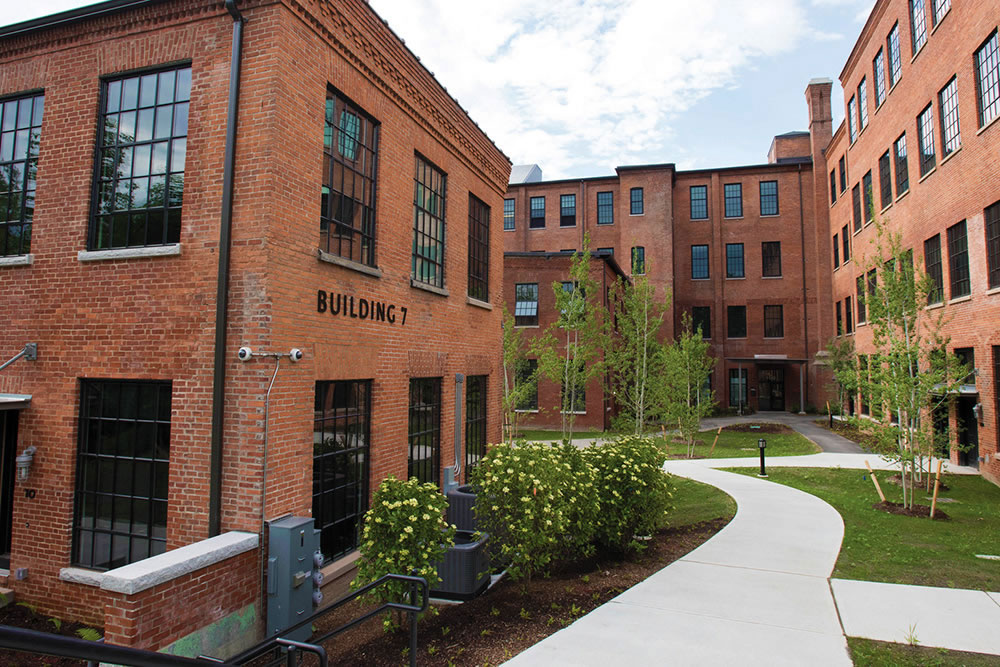
The Cable Mills residential complex occupies eight buildings originally built as part of the General Cable/Water Street Mill. It includes a total of 61 units, 13 of which have been designated as affordable housing. Photo courtesy of Cable Mills
Originally built in 1873, the General Cable or Water Street Mill in Massachusetts got its start manufacturing twine, and later, wire and cable. As the demand for these products gradually declined throughout the 20th century, however, the mill became functionally obsolete until it was finally forced to shut its doors in 1996.
In the early 2000s the mill complex—a total of 15 structures—was acquired by the Traggorth Companies, who sought to transform eight of the buildings into residential apartments. Over the next 14 years and with the help of local architectural firm Finegold Alexander Architects, their goal was finally realized in Cable Mills, a residential complex encompassing 61 total units, 13 of which were designated as affordable housing.
All of the original exterior brick cladding was preserved, along with 20 types and sizes of windows across multiple buildings. Inside, exposed brick walls give the units character while high wood-beamed ceilings, polished concrete floors, and contemporary finishes seamlessly blend the old with the new. Energy- and water-efficient appliances and systems were also installed, greatly improving the project’s overall sustainability.
Finegold Alexander Architects’ exemplary renovation of Cable Mills was recognized by Preservation Massachusetts and the project received the Paul & Niki Tsongas Award – Biggest Impact Rural/Suburban in 2017.
2. Kensington Commons, Philadelphia
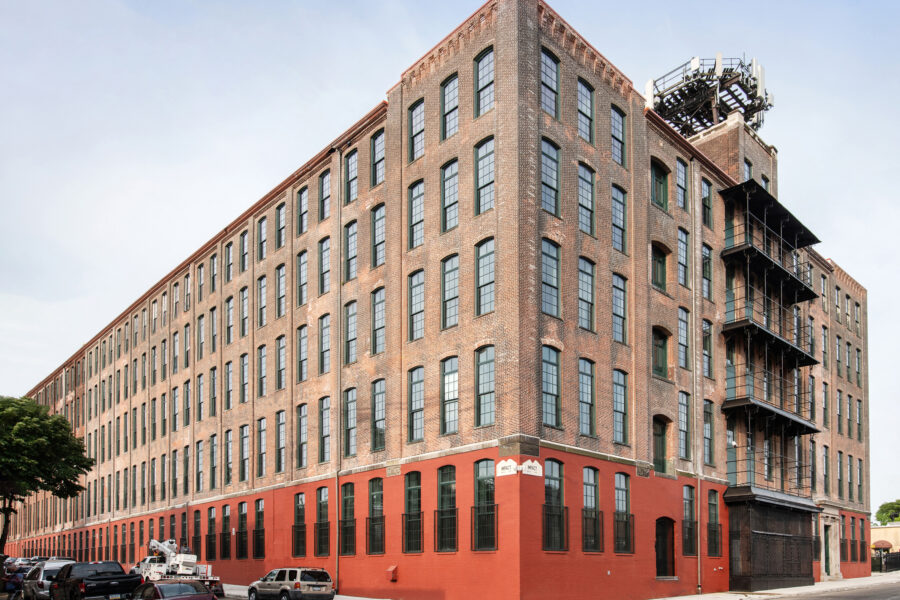
Kensington Commons at A Street and Indiana Avenue was transformed by Barton Partners. Photo by Taylor Photo
Originally built in 1893 as the Hoyle, Harrison and Kaye Textile Mill, the Kensington Commons mixed-use residential complex at the corner of A Street and Indiana Avenue now houses 48 one-, two-, and three-bedroom units all being offered at a heavily subsidized rate.
Redesigned by the Barton Partners architectural firm for Impact Services—a non-profit committed to mobilizing people and resources to create connected, resilient, thriving communities—Kensington Commons is one of six projects in the Kensington Plan. Devised by Impact Services and the New Kensington Community Development Corporation, the Kensington Plan aims to improve neighborhood health and quality of life through resident input and involvement.
Having received a $300,000 Pennsylvania Historic Preservation Tax Credit allocation from the Pennsylvania Department of Community and Economic Development, alterations to the building’s exterior were kept to a bare minimum in order to preserve the original factory look, though the interior was modernized in a respectful manner. When the commons opened in July 2023, units ranged from $650 for a one-bedroom apartment to $900 for a three-bedroom unit, according to Kensington Voice’s Siani Colón. Amenities include a community room, green spaces, and a new parking lot.
In addition to the community room, Kensington Commons’ ground floor includes 70,000 square feet of commercial retail space, 10,000 square feet of which Impact Services plans to use for their own operations. Impact is currently in the process of identifying other potential commercial tenants.
3. Sibley Square, Rochester, NY

The Sibley Square mixed-use complex is home to retail stores, restaurants, offices, a grocery store, an art gallery, and nearly 200 housing units, 53 of which are priced for low-income households. Photo by Christian Scully
Designed by The Architectural Team (TAT), Sibley Square resides in the former Sibley’s Department Store—built in 1909—and occupies 1.1 million square feet. This mixed-use development encompasses retail shops, restaurants, a child-care facility, a grocery store, offices, an art gallery, and nearly 200 mixed-rate and affordable housing units split between three rental agencies—effectively making the structure a walkable, multi-story neighborhood.
Because the structure was originally built in the early 1900s at a time when pedestrian infrastructure was the norm and the automobile still considered a frivolous luxury, the Sibley Square multifamily complex was already served by multiple public transit options and within walking distance of several parks, further reducing the need for private vehicles and making for a much healthier, safer living environment. These qualities, along with the fact that all appliances and lighting within the building are Energy Star-labeled, helped Sibley Square earn LEED certification.
Of the three rental agencies operating out of Sibley Square, Liberty Lofts is the one that caters to lower-income residents in the form of a workforce housing program. The initiative offers a total of 53 units intended for households making no more than 60% of the AMI. “Our towns and cities face persistent challenges, but it truly is possible to use existing assets to meet many of our most pressing social needs,” Michael Albert, a project manager at TAT, previously told gb&d. “For us Sibley Square is a reminder to always think creatively and take the perspective that solutions are possible when people collaborate.”
4. DADA Distrikt, Brno, Czech Republic
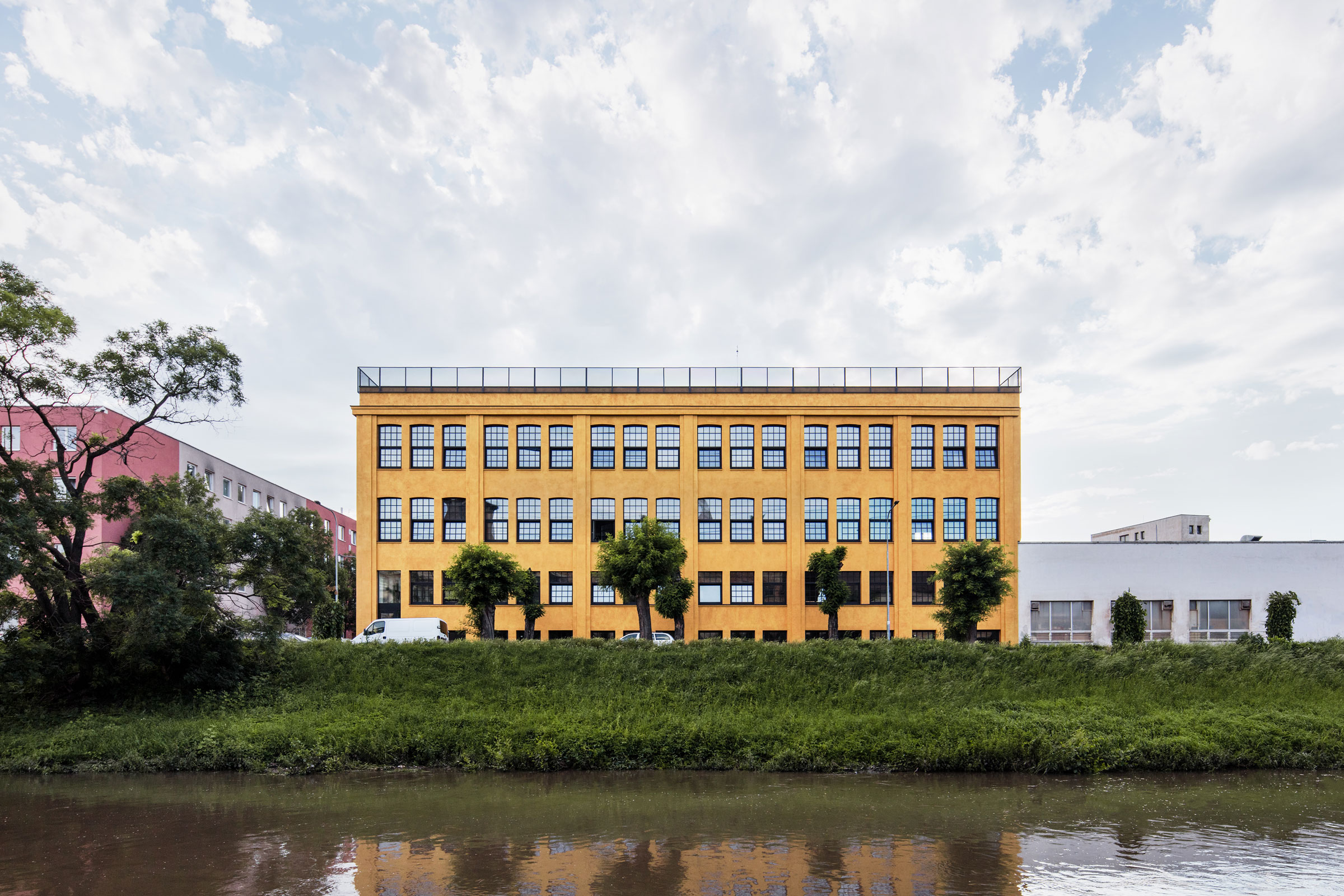
Designed by KOGAA Architects, the DADA Distrikt is an affordable housing project that resides in the shell of a former industrial storage facility. Photo by Kubicek Studio
The US isn’t the only place where affordable housing is important. The Czech Republic has some of the highest real estate prices in Europe, but a team of architects at KOGAA developed an option for affordable housing in Brno. Called DADA Distrikt, the former storage facility is now a mixed-use and residential complex.
KOGAA carefully considers each adaptive reuse project and, in the case of DADA Distrikt, the team was inspired by the building’s history, working with a decorative accent on the facade. Designed as a shell-and-core, the main load-bearing structure has been cleaned up to its most elementary and strongest form.
“The most impressive thing about DADA Distrikt is its unique proposition to the problem with real estate prices in the country,” KOGAA cofounder Alexandra Georgescu previously told gb&d. “The local market lacks affordable housing and therefore calls for alternative development solutions that would also be able to strengthen the quality of public spaces. Its relatively economical reconstruction was made possible through shared funding and direct sales, therefore avoiding additional investment returns to developers and fees to real estate agencies.”
The four-story multifamily building houses 10 loft-style apartments, commercial office spaces, and a green roof where residents regularly organize film screenings, barbecues, owners’ meetings, and other events. Each apartment also has its own raised bed on the rooftop garden, allowing residents to grow herbs, small vegetables and fruit.
In addition to being a shared communal space, the rooftop garden also helps manage stormwater runoff, reduces the risk of flooding, provides cooling in the summer and encourages the reintroduction of biodiversity into an environment otherwise damaged by industrial pollution. Gray water is collected and reused throughout the building for its internal and external functions, including in washrooms and for irrigation purposes.
5. Santa Ana Arts Collective, Santa Ana, CA
As the first building redeveloped under Santa Ana’s revolutionary adaptive reuse ordinance, the Santa Ana Arts Collective (SAAC) aims to provide artists and artist families with affordable low-income housing.
Redesigned by Studio One Eleven, SAAC resides in the shell of what was once an underperforming commercial building originally built in 1965 and now encompasses residential units, a community space, art gallery, makerspace, rehearsal and dance studio, music room, computer room, and more. All housing and housing services are managed by Meta Housing, who secured funding from the Affordable Housing and Sustainable Communities Program, one of California’s largest funding sources for low-income and affordable housing projects.
By reusing the existing structure Studio One Eleven was able to avoid 2.32 million kilograms of CO2 emissions and divert 25 million pounds of construction and demolition debris from the waste stream. In addition to the renovated lofts, SAAC also includes 10 new affordable two- and three-bedroom townhomes located along the site’s western perimeter. A courtyard and sculpture garden can be found onsite as well.
6. Tiger Senior Apartments, Paris, IL
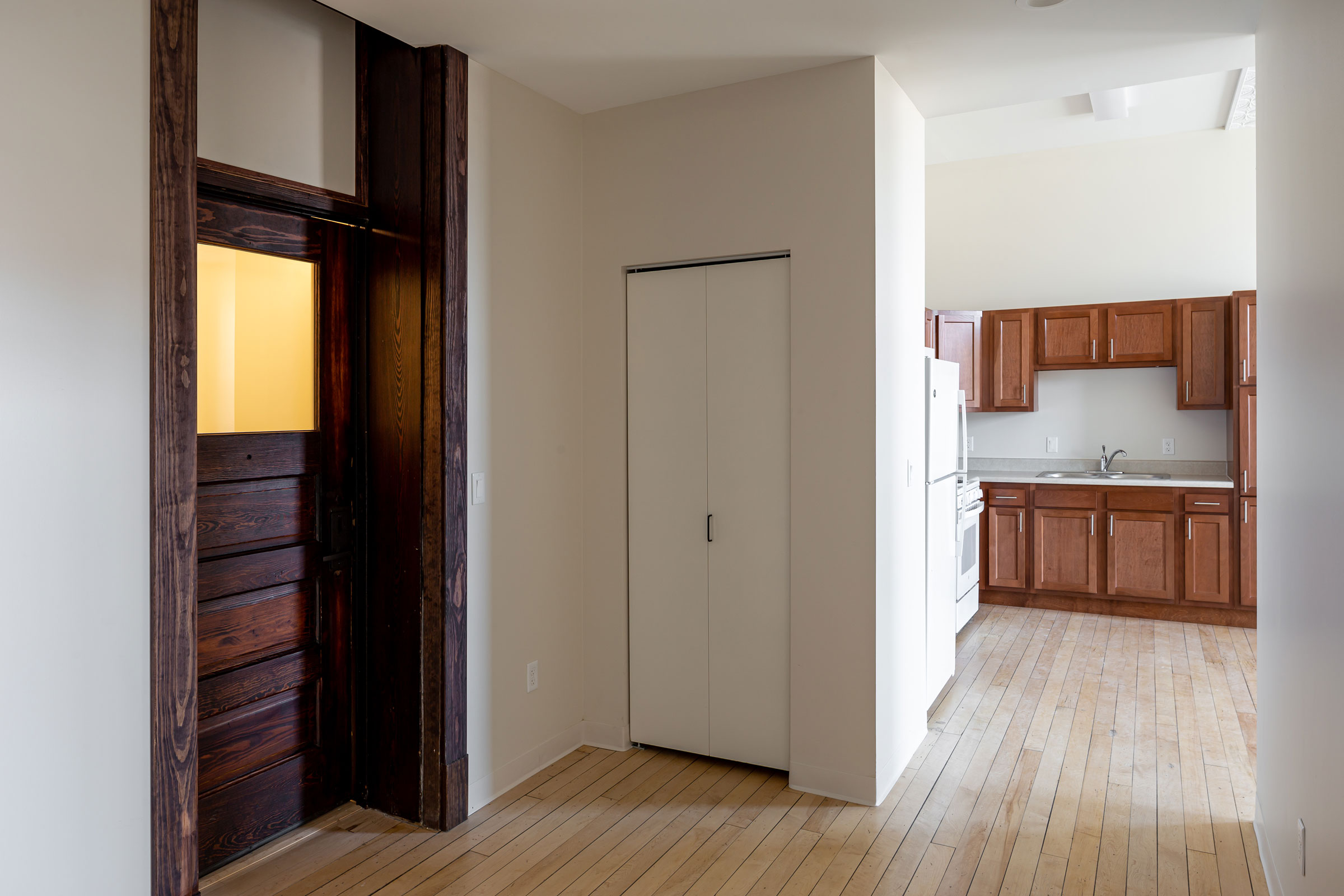
Tiger Senior Apartments is a low-income senior living development that resides inside a former high school. Photo by J.L. Jordan Photography
Originally built in 1909 and expanded in 1922, Paris High School served as the only high school in Paris, IL for over a hundred years until, in 2015, it was forced to shut its doors when a new school was built closer to the edge of town. With the building now empty, it seemed likely that the school would be torn down—and with it, an integral piece of the community itself.
Fortunately the Laborers Home Development Corps. (LHDC)—is a private, not-for-profit developer of quality, affordable housing in under-served communities—stepped in, realizing the potential the building still held. Tiger Senior Apartments, an affordable housing development named for the school’s original mascot, is the realization of that potential.
Redesigned by Worn Jerabek Wiltse Architects (WJW), Tiger Senior Apartments offers 42 apartments for low-income seniors aged 55+, with 100% of the units designated as affordable housing either at 60% or 30% of AMI. The former high school retains its original gymnasium and auditorium spaces, providing activity and gathering spaces for tenants. High ceilings and large windows help foster an open, airy environment that is both welcoming and inviting.
Like many adaptive reuse projects, however, Tiger Senior Apartments was not without its challenges—especially when it came to balancing necessary energy efficiency and accessibility upgrades with historic preservation tax credit guidelines. “The historic preservation requirements imposed by NPS and SHPO [the State Historic Preservation Office] created several hurdles to navigate in order to reach our sustainability goals, yet they also afforded us unique opportunities for a higher level of sustainability than would have been achieved with a new construction building,” Heidi Wang, a partner at WJW, previously wrote for gb&d.
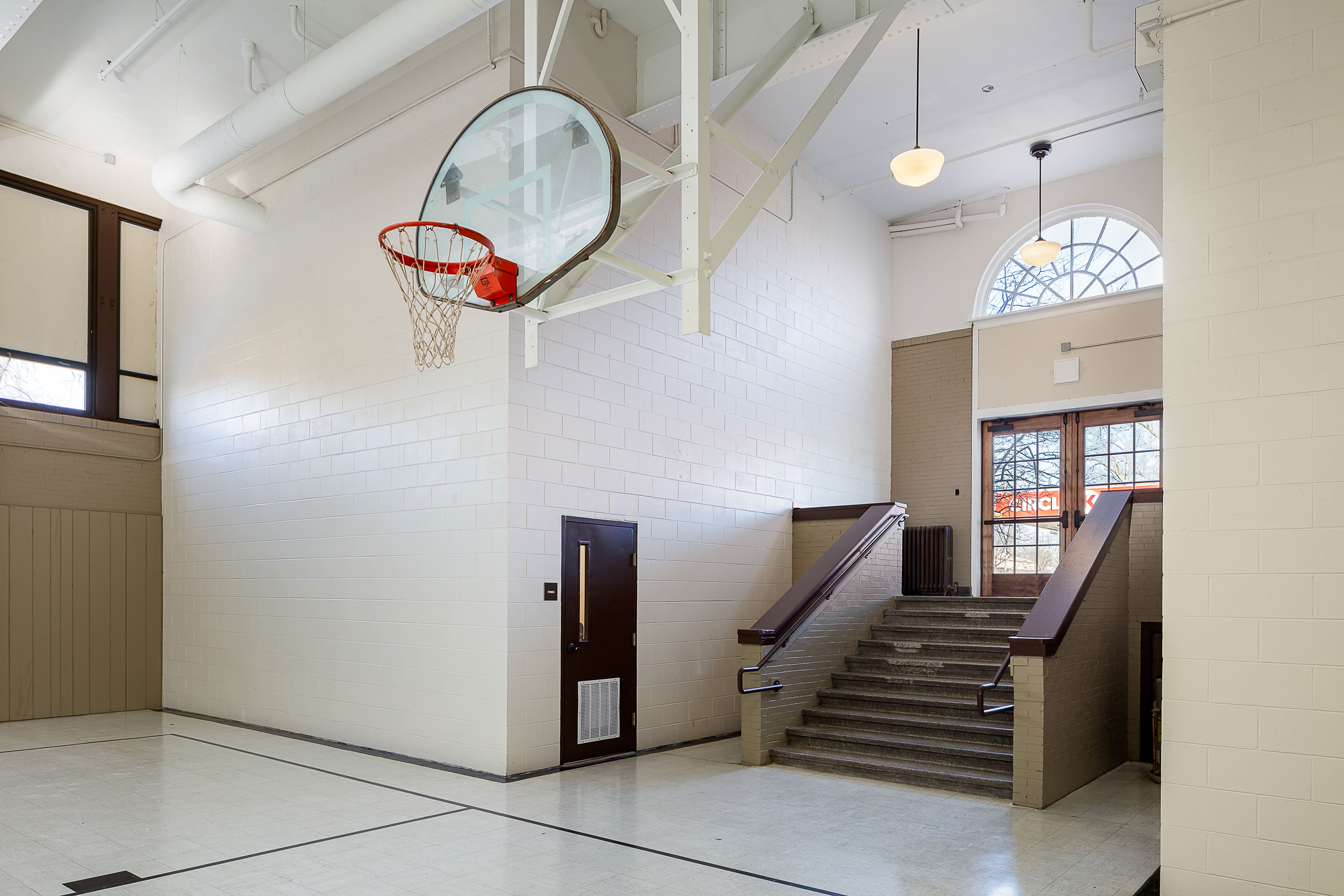
The former high school retains its original gymnasium and auditorium spaces, offering activity and gathering spaces for residents. Photo by J.L. Jordan Photography
Although the renovation faced many challenges, from refinishing existing hardwood and bringing it up to the standards of the NGBS to preserving historic windows, the project was able to maintain historic character and innovative sustainable changes at the same time. “Not only did we reuse the existing shell and structural systems but also a high percentage of the interior materials and finishes, including existing plaster wall and ceiling finishes, floor material including terrazzo and wood flooring, wood trim, tin ceilings, interior wood doors, lockers and historic millwork,” writes Wang. “This high level of reuse allowed us to retain all of the embodied energy present in the historic materials, as well as a sense of historic richness.”
Thanks to WJW’s efforts, Tiger Senior Apartments received the 2021 Landmarks Illinois Richard H. Driehaus Foundation Preservation Award for Adaptive Reuse.
Jessica Powers contributed to this article.




